To create an over under photo you are basically creating a window into another world where light and focus behave on a totally different playing field. Especially when shooting through a curved optic such as a dome shaped port.
The refraction of water caused by the curved surface of the port makes submerged objects appear disproportionate to reality. That is to say, they appear much closer. The smaller the dome port the greater this effect. So, what the camera actually sees underwater is a “virtual” diffracted image much closer than it is in reality. The camera must then focus on this virtual image to make a sharp photograph.
This is not generally a problem when composing a completely submerged image. It does however cause a few problems with depth of field when composing a half/half if you require front to back sharpness. The lens being used must be able to envelope the smaller, closer “virtual” image and the real above water image in its depth of field range. For this reason most photographers reach for a fish eye or extreme wide angle lens and stop down to F22 to capitalise on depth of field. This works fine but has obvious drawbacks – you either lose shutter speed or have to bump up the ISO. This is particularly a drawback in lower light situations and in the open ocean when you are being bounced around by waves. In these cases a higher speed shooting is desirable.
I mentioned earlier that the smaller the dome port, the greater the refraction. This means the closer the virtual image is, the more we need to up our f-stop to achieve greater depth of field. This allows us to get both the under and over part of the image in focus.
How to counteract this problem?
I designed and built my own monster 16.8” dome port (coming from an engineering background helped with that) to shoot over under images. The results are awesome. Front to back sharpness is now easily attainable with reasonable apertures and shutter speeds (as wide as F8 with a fisheye). Proportions also appear more realistic. Sometimes images are almost too clear and lifelike leading to comments such as “That picture has to be fake”. I assure you it’s not. I can achieve a thin and needle sharp waterline on the dome port and an equally clear horizon. Everything in between is also sharp well into the corners of the frame. Happy days.
Not only does the dome port alleviate focus and proportion problems but it also has several other advantages.
1. When shooting in choppy, open ocean the port is buoyant enough to ride over the swells and rarely gets engulfed.
This allows you to remain in a good position to continuously shoot over under and get a good even split of air and water in frame. This was a great advantage to me when shooting silky sharks at the Gardens of the Queens, Cuba. The seas were quite choppy and the action was coming thick and fast. Every frame I fired was a good over/under and not and entirely engulfed “under” or left high and dry “over”.
2. Another advantage of the buoyancy of the dome is that it pretty much supports itself in the water.
This means you don’t have to lift the weight of the camera up to shoot. This usually results in the photographer sinking which makes it difficult to frame up….. and breathe!!
3. The added lens to water line distance of this large dome means the water line remains thin and unobtrusive in the frame too.
If you imagine a smaller dome the meniscus of the water line is much thicker and occupies too much frame space because it is close to the lens. This can be distracting, especially as it won’t be sharp either. I guess this point is kind of a personal thing, but I do like a nice sharp waterline.
4. An advantageous by product of this huge port is that I can use my 50mm Nikkor lens with it to create some interesting and less obvious over/under images.
Such as my image “New Pennies”. It’s a shoal of 5 silver bream shot swimming just below the surface on my 50mm lens at F4.5 if I recall correctly. The fish are pin sharp but he pastel colours of the sunrise in the over part of the image are far out of focus with that dreamy, silky smooth bokeh goodness. It’s a different type of image not possible with smaller domes.
5. And finally, the dome makes a good croc and shark shield!!!
The backing plate is 8mm solid marine grade aluminium, it make you feel that bit more protected during the more sobering shoots.

